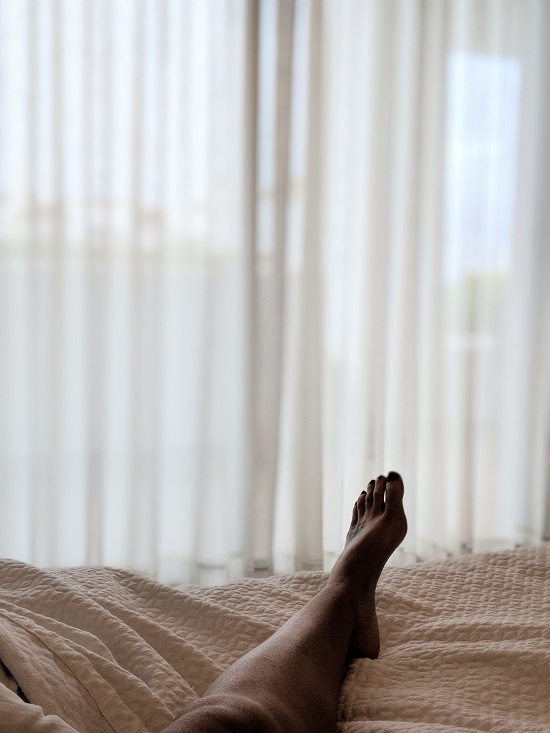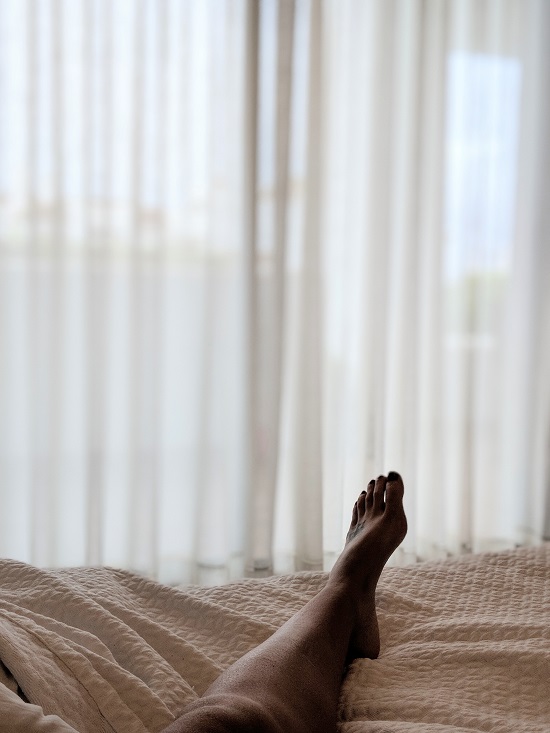Whether the culprit is pushing the limit to hit your daily step count or a new pair of shoes that are a less-than-perfect fit, we all suffer from aches and pains in our feet from time to time. But when is a strain in your step the sign of a more persistent problem?
Fallen arches are a relatively common foot problem that can range from a minor annoyance to a major pain. If you suspect you’re suffering from fallen arches, have no fear—this article is your how-to guide for identifying and dealing with this pesky podiatric problem.
Understanding Fallen Arches
First things first: What exactly is a fallen arch? To understand this issue, you need to understand your feet—starting with the sole.
All feet feature some degree of curvature along the sole, and this curvature is referred to as the arch. The structure of the arch is created by:
- Tendons – Tendons are thick bands of tissue that connect your muscles to your bones so that your muscles can move your bones.
- Ligaments – Ligaments are also thick bands of connective tissue, but rather than connecting muscle to bone, they connect bone to bone to create a stable structure.
Typically, all humans have flat feet as babies and children (i.e. feet that don’t have an arch). As children grow and perform new movements, such as walking, running, and jumping, tendons and ligaments will develop to form the arch of the foot. If the tendons and ligaments of the foot form properly and connect together as they should, the feet should have a typical arch by adulthood.
However, flat feet can remain if these connective tissues fail to form properly. This condition can occur in one of two ways:
- Flexible flat feet – This condition is more common, affecting up to 25% of adults. Flexible flat feet are marked by an arch that flattens out when a person is standing and putting their weight on their feet but reappears once the foot is at rest. This type of flat foot is due to loose ligaments and often causes no symptoms or pain.
- Rigid flat feet – Unlike flexible flat feet, rigid flat feet have no arch present at all, whether the foot is standing or at rest. Rigid flat feet are a much more serious condition, usually caused by either a genetic or congenital difference in the bone structure of the foot or by an injury impacting the bones of the feet. A rigid flat foot condition can cause uncomfortable side effects, like gait problems and foot pain.
Sometimes, an arch can flatten out unexpectedly in adulthood. When this happens, it’s called a fallen arch—and it can be a serious inconvenience. While its outward appearance and some of the side effects can be the same as (or similar to) rigid or flexible flat feet, the major difference lies in the root causes behind it.
What Are the Causes of Fallen Arches?
Fallen arches are often the sneaky offenders behind sudden, unexpected foot pain or problems with your gait. But what causes these unwelcome sole surprises, and is there any way to avoid them?
Unlike long-term flat foot conditions, like rigid or flexible flat feet, which are caused by congenital bone issues or issues in the development of the ligaments, fallen arches usually have a more sudden onset during adulthood. They’re also typically caused by a different culprit: the tendons of your foot, usually the posterior tibial tendon.
The posterior tibial tendon is the piece of connective tissue that links the bones of the arch of your foot to your calf muscles. When everything is working properly, this tendon allows you to move and flex your foot so that you can walk, run, jump, dance, move—you name it!
However, when the posterior tibial tendon becomes strained or inflamed, it can no longer properly support the arch of your foot, causing it to collapse (or “fall”) and give your feet a flattened look.
This tendon can become strained or inflamed through:
- Overuse caused by exercising too much or not resting and stretching properly
- A foot injury
- Progressive damage over a long period of time
While issues with the posterior tibial tendon are the most common cause of fallen arches, they can also be caused by:
- Conditions that cause inflammation, like rheumatoid arthritis
- Conditions that cause nerve damage, like diabetes
- Obesity
- Pregnancy
How Do I Know If I Have A Fallen Arch?
So, how exactly do you distinguish fallen arches from other types of flat feet or foot pain? There are a few key indicators that might confirm you’re dealing with fallen arches.
Onset
While flexible flat feet and rigid flat feet are lifelong issues that appear early on in adulthood, fallen arches typically have a sudden onset after years of relatively normal arches. It’s best to keep an eye on your arches after periods of strenuous exertion or after an injury to avoid developing a fallen arch or damaging your arches further.
Pain
If you’re experiencing flat feet, you may be asking, why do the arches of my feet hurt? As mentioned, the most common culprit behind fallen arches is injury or inflammation along the posterior tibial tendon, a condition more commonly known as posterior tibial tendon dysfunction. Because this tendon runs along the arch, it often results in pain to the inside of the arch up to the ankle.
This pain typically gets worse with exercise or any activity that puts weight on the fallen arch, like walking or standing for long periods of time. Over time, as the bones of the foot move out of place, this pain might move to the outside of the foot. Another common cause of arch pain can be plantar fasciitis, which can impact both the heel and the arch.
Foot Appearance
The most obvious visual clue that you might be dealing with a fallen arch is a suddenly flat foot. However, there are a few other indicators to look out for. For instance, as inflammation develops and worsens, you may experience swelling along the inside of your arch.
Additionally, as your fallen arch progresses, you might notice the foot beginning to turn outwards as the internal structure of your foot shifts.
How Do You Alleviate A Fallen Arch?
As frustrating or uncomfortable as fallen arches can be, the good news is they can usually be reversed. Because these flat feet aren’t the result of permanent differences in the structure of the foot—but rather overuse or injury—all it takes is a little patience (and perhaps a little boost from some orthotics).
When it comes to understanding how to rebuild arches in flat feet, it’s important to know that these methods are unique to your arch type. So, when working to fix a fallen arch, it’s best to try a few different tricks in combination to find an effective solution. After all, you’ll need strategies to simultaneously address the root cause of the fallen arch, as well as any discomfort caused by it.
Here are a few tricks you can try to help get your feet feeling good as new:
Rest
The absolute best thing that you can do to fix your fallen arch is simple: stay off of it! Overuse and overexertion are common culprits behind fallen arches. Continuing to put pressure and unnecessary stress on your arch can make the problem that much worse.
Take a few weeks off your strenuous workout routine or try a shorter route for your walk as you give your foot time to rest up and recover.
Recovery Techniques
Along with rest, you can implement a few recovery techniques to further expedite your foot’s healing process. For instance, you can:
- Reduce the swelling and inflammation in your foot by applying ice packs for twenty to thirty minutes at a time.
- Build your flexibility and strength back by trying gentle stretching exercises, like heel raises and foot rolls.
- Get plenty of sleep and drink plenty of water to make sure you’re giving your body the tools it needs to recover.
Insoles
Shoe inserts and insoles can be effective in helping manage a collapsed arch condition. When you’re dealing with a fallen arch, the support and structure of a regular shoe often just won’t cut it. Insertable insoles, like the Vionic orthotics, are a great way to turn your favorite pair of unsupportive shoes into arch-friendly footwear.
Designed by podiatrists and clinically proven to reduce overpronation (which can lead to fallen arches), insoles like the Vionic Relief Insole are easy to slide into your favorite pair of boots, sneakers, heels, or flats.
Additionally, whether you’re looking for all-around arch support or deep heel relief, insoles like the Unisex Relief 3QTR Insole can also be a major game-changer when it comes to fixing your fallen arch and preventing the next incident. The additional support offered by these insoles can provide your feet with the structure they need to get you wherever you’re going—without pain or discomfort.
Support Your Fallen Arches with Vionic
Fallen arches can be a major pain in the foot—but they don’t have to be. Understanding what fallen arches are, what causes them, and how to treat them can help to alleviate any pain or discomfort and prevent further foot damage.
If you’re dealing with fallen arches, choose Vionic for all your footwear needs. Both our insoles and our expertly made-shoes are designed to promote better alignment and offer the arch support you need. Plus, our range of style and color options make it possible for your feet to feel good and look good.
Explore our collection today to reset your concept of optimal foot comfort.
Sources:
- “Tendon vs. Ligament.” MedLine Plus. https://medlineplus.gov/ency/imagepages/19089.htm
- “Fallen Arch.” Harvard Health Publishing. 5 April, 2019. https://www.health.harvard.edu/a_to_z/fallen-arch-a-to-z
- “Fallen Arches.” Foot Health Facts. https://www.foothealthfacts.org/conditions/fallen-arches
- “Adult Acquired Flat Foot.” OrthoInfo. https://orthoinfo.aaos.org/en/diseases–conditions/adult-acquired-flatfoot/

